Quarterly Priority Goals
I. Definition
Quarterly Priority Goal is a list of 3 to 7 most important things that your company must get done in the next 90 days, to get closer to achieving your 1-year-plan.
Typically, it focus on the following elements:
- Revenue
- Profit
- Measurables
(Derived from the Annual Objectives and broken down into Quarterly goals)
- And 3-7 Non-financial objectives.
II. Values
- Help break down the Annual Goals into specific actions for each Quarter.
- Eliminate natural distractions: Human minds tend to lose focus and get distracted after every 90 days. Breaking down the Quarterly tasks will help bring back "Stay Focus" and optimize everyone's efforts.
- Prioritize “doing what matters” for effective execution, avoiding getting caught up in trivial matters.
The Weekly meetings on Simplamo will review every Quarterly Priority Objectives, allowing you to address any obstacles and connect with the team.
III. 3 Levels
First of all, leadership team's responsibility is to set “Company Priority Goal” (Company level) aiming for absolute focus and achievement together.
Subsequently, each individual in the leadership team is accountable for establishing “Department/Functional Priority Goal” (Department level) for their respective functions.
Finally, the “Individual Priority Goal” (Individual Level) are assigned to each direct report. Commitment to completing the objectives within the set timeframe and actively participating in weekly meetings to identify and resolve issues.
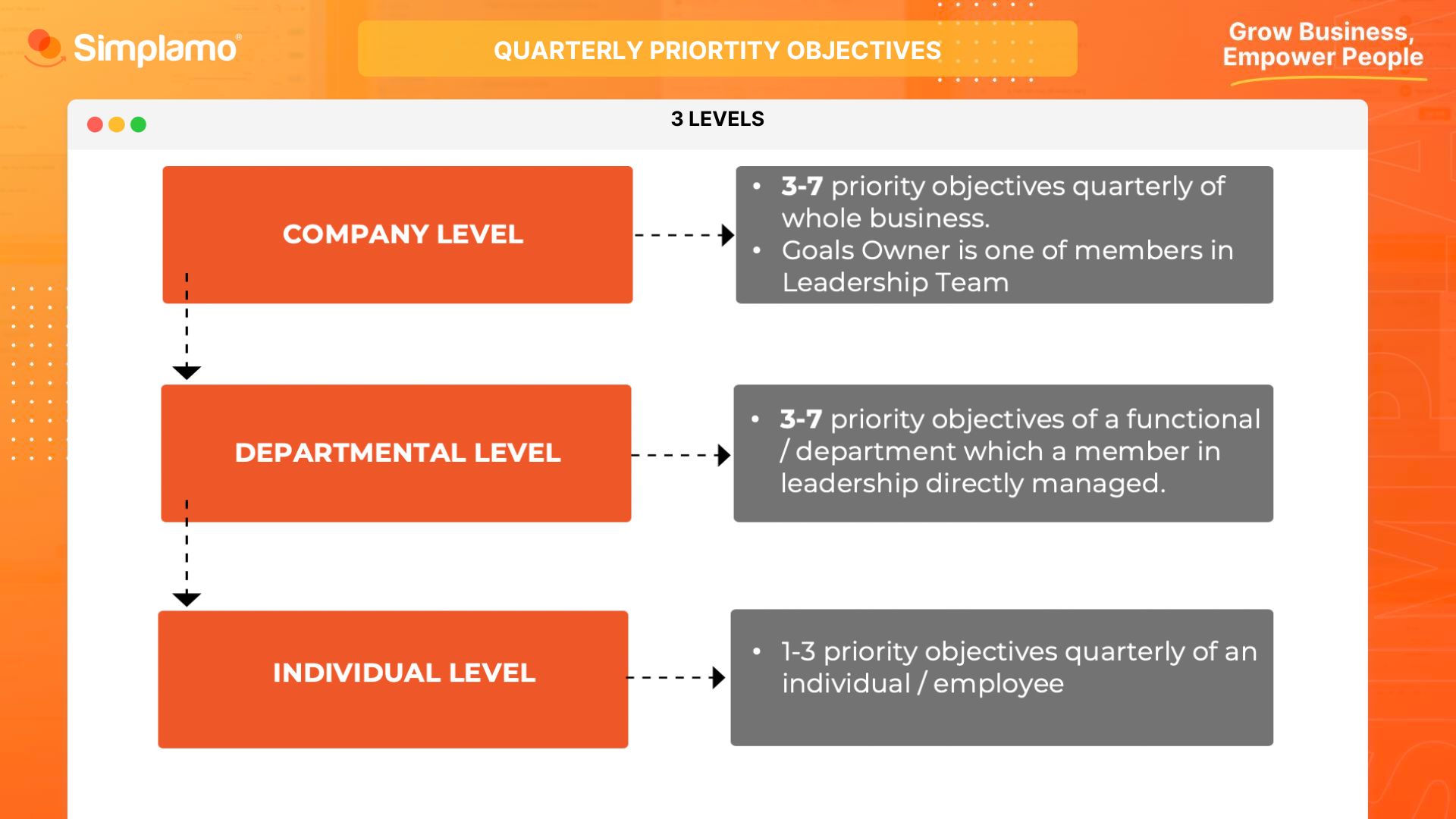
IV. Criteria
1. Quantity:
- For Company Level: The recommendation is to set no more than 7 goals, as “less is more” and allows for better focus on accomplishment.
- For Department/Functional Level: Similarly, the maximum is 7 goals.
- For individual level: From 1 to a maximum of 3 goals for better focus and achievement within 90 days.
Besides the objectives derived from Company, if the maximum number of objectives is not reached, the head of department and their team can also add additional objectives as long as there is a mutual understanding that it is necessary, and supports the achievement of a Company Level objective.
Example:
The HR department has a goal: "Successfully recruit 1 Business Director for the Hanoi office" - Supporting the Company objective of "Achieving 10 billion in revenue in the Hanoi office."
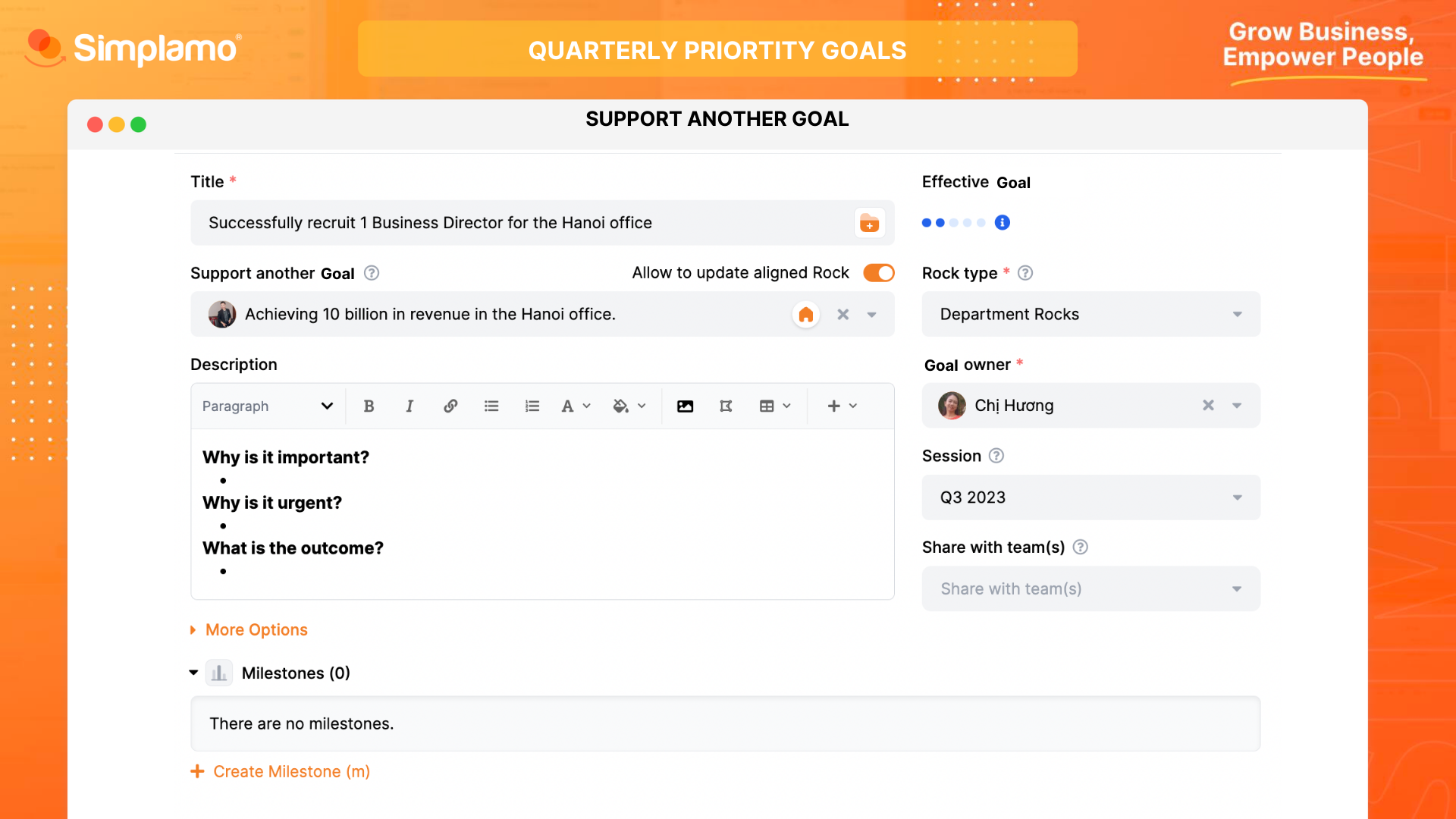
2. Start with a Verb
All objectives must begin with a "Verb" to specify the actions that can help you accomplish them.
Example:
- Complete...
- Recruit...
- Package...
- Successfully organize...
- Sign...
- Achieve...
- Issue...
- ...
3. S.M.A.R.T Format
All objectives must be written according to the S.M.A.R.T:
- S (Specific): Specific, understandable (can be understood by anyone, regardless of expertise)
- M (Measurable): Quantifiable (associated with numbers).
- A (Attainable): Realistic, achievable (with sufficient personnel and budget)
- R (Relevant): Supporting higher-level objectives
- T (Time-bound): Has a deadline for completion.
Simplamo also provides criteria for setting an effective goal.
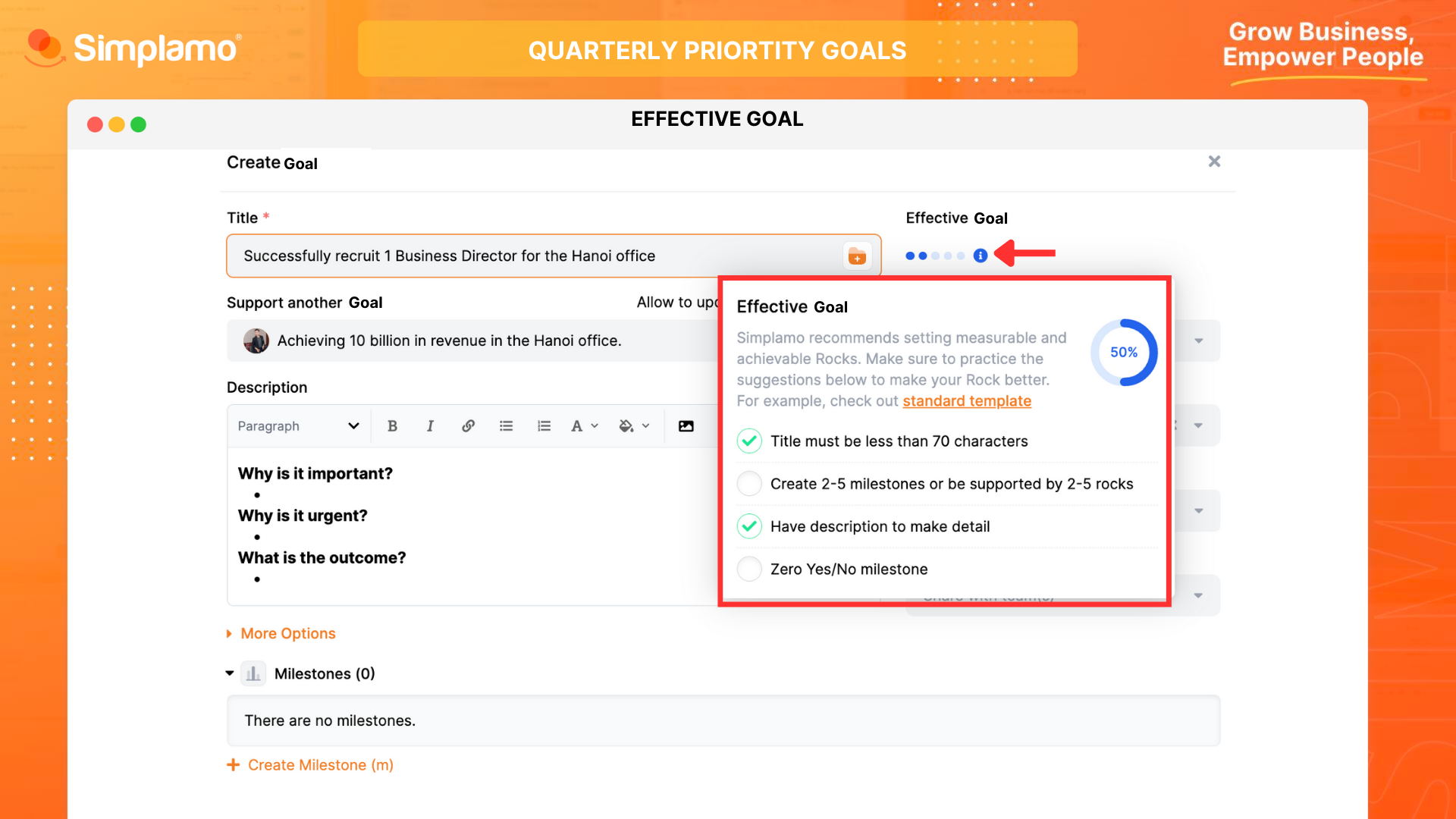
4. Set up 2-5 Milestones
To manage objectives effectively and avoid procrastination, it is crucial to "break down" objectives into “Milestones” or you may have heard of similar terms like "Key Results", "Key Milestones"... all essentially have the same concept:
“Main checkpoints to be achieved in order to reach the objective. Help to make objective more specific and measurable.”
In simple terms, to set up Milestones, let’s answer the question: “What are key steps must be taken to accomplish the Quarterly Priority Objective?”
Write them down according to the principles:
- Quantity: 2-5 milestones
- Start with a Verb
- Comply with S.M.A.R.T format.
- The deadline for the final milestone should be before the deadline for the Objective to have time to address any arising issues.
Example:
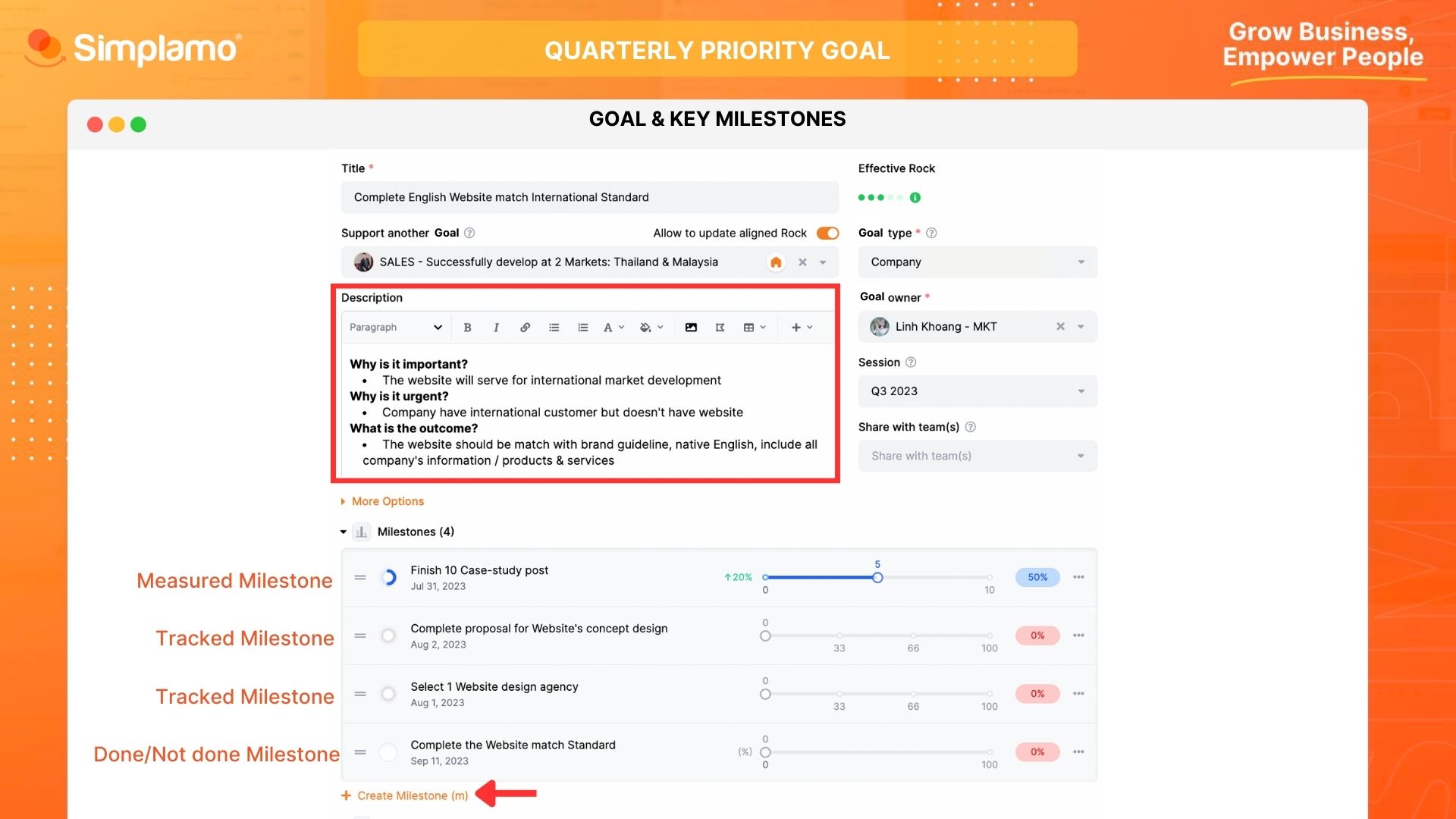
V. Types of Milestones
When you click on the "Create a milestone" button on Simplamo, you will see 3 types of milestones. You can choose the one that best fits your plan and align with your direct manager.
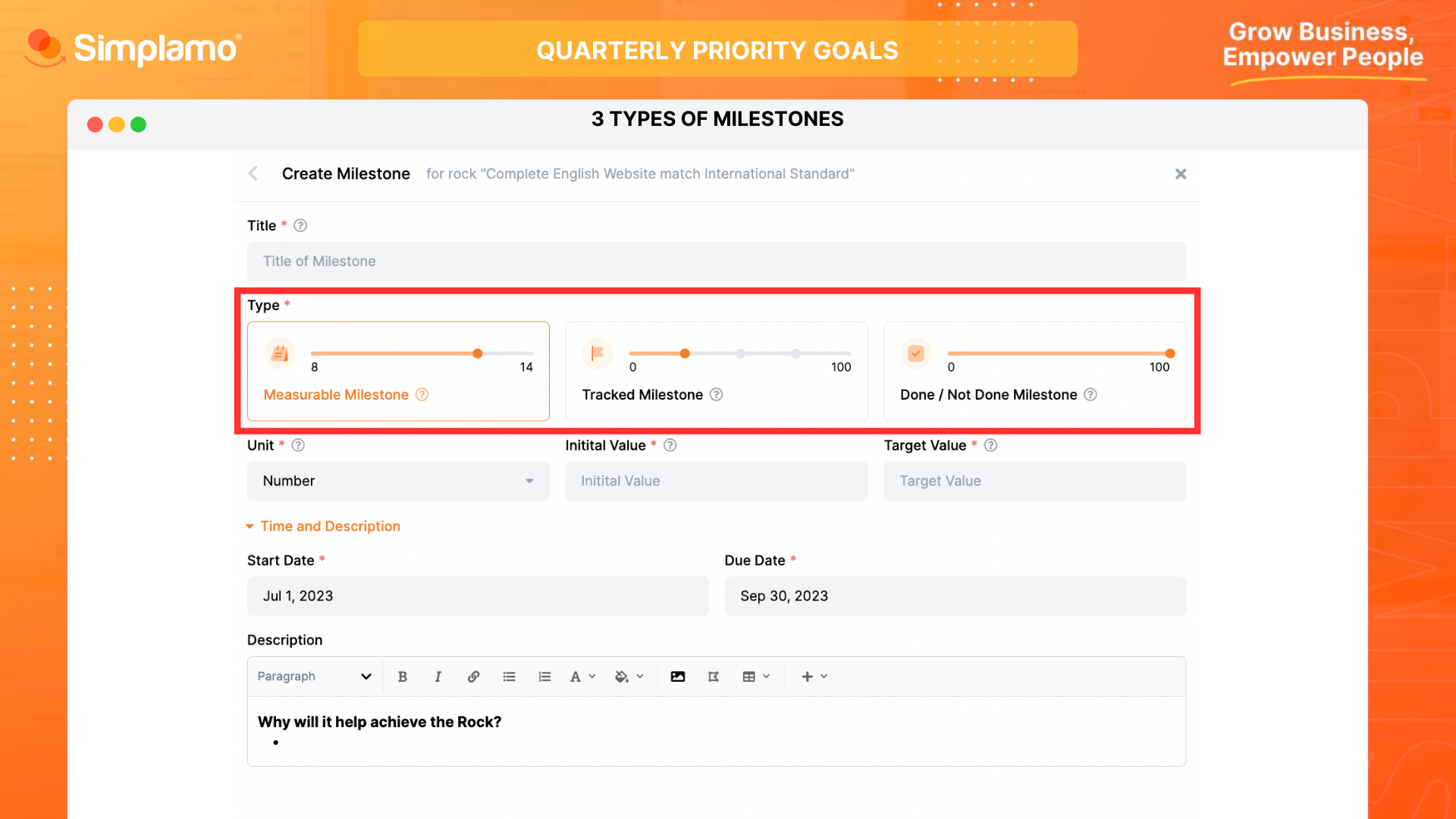
1. Measured Milestone
This type of milestone uses specific data to measure the objective. Suitable for objectives related to revenue, percentages, or figures.
2. Plan (tracked) Milestone
Set up based on the working process (if any) or a list of tasks needed to achieve the Milestone.
3. Done / Not Done Milestone
This milestone type is qualitative. Just Done or not.
As mentioned earlier, both Quarterly Priority Objectives and Milestones must comply with the S.M.A.R.T format. So that using this type of milestone is not encouraged, except for highly committed individuals and/or special cases where there is alignment within the team, between manager and employee.
VI. 5 Setup Steps
Step 1: Select Future Date:
It is the final day to assess the business performance within 1 Quarter.
Typically, it will be the last day of that Quarter.
Step 2: Calculate Financial Goal
Focus on the desired Revenue and Profit.
Usually derived from the Annual Objectives or you can take the estimated figures from the previous Quarter and add a percentage or number that you want to increase.
Balance the opportunities, finances, time, and resources to have the realistic target number.
Step 3: Write Measurables
Answer the question "Where does this Revenue come from?"
Typically, it will come from factors you can refer to below:
- Number of new customers
- Number of returning customers renewing contracts
- Number of domestic contracts
- Number of international contracts
- ...
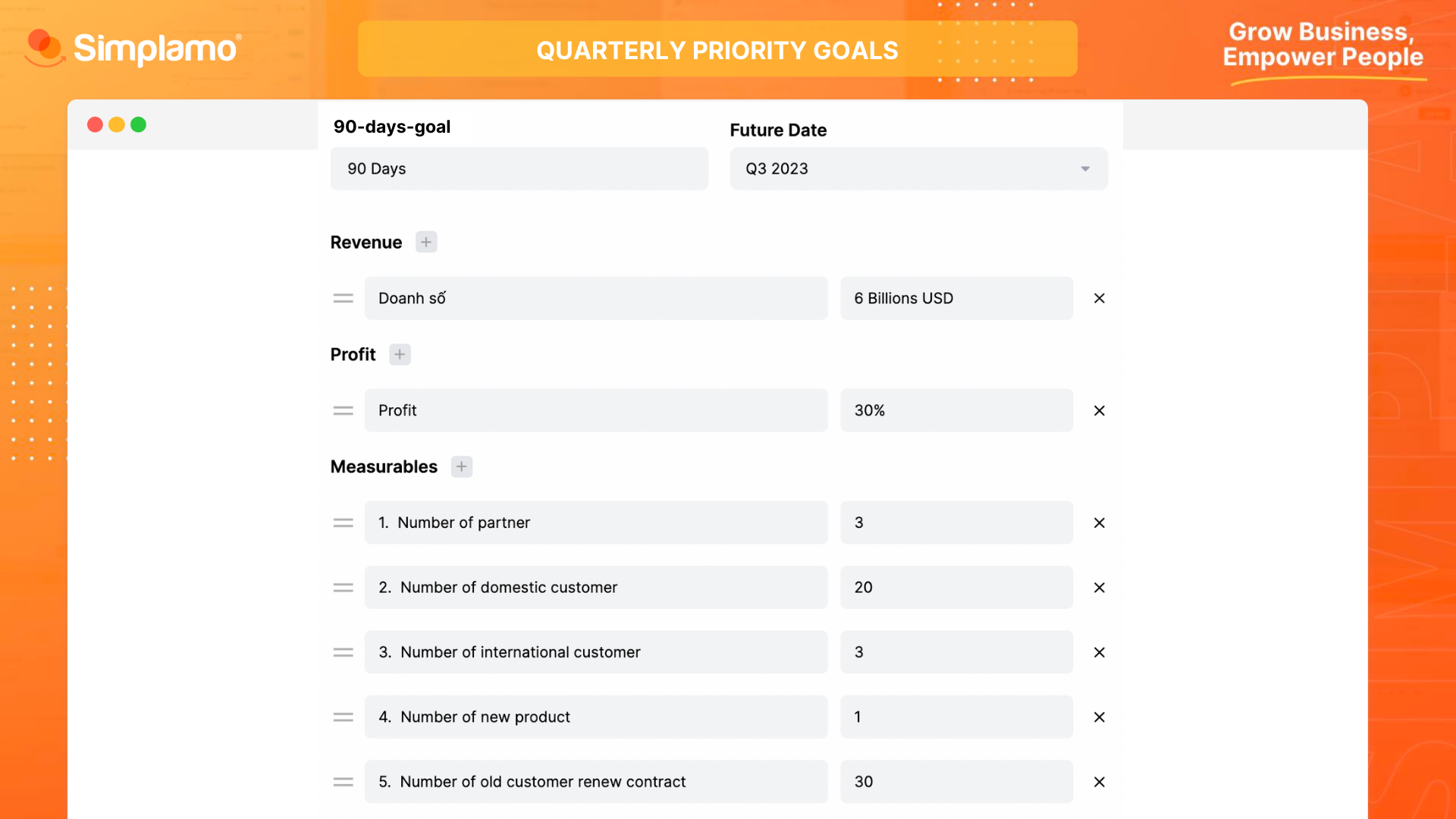
Step 4: 3 to 7 Non-financial Goals
Write down 3 to 7 Priority Goals that need to be accomplished within the Quarter to support the achievement of the 1-Year-Plan.
*Note: First, the leadership team needs to sit down together to determine the Company Priority Objectives. Then, heads of key functions will implement Priority Objectives at the departmental level, and each individual within the department to ensures that the objectives derived from the Company, it’s relevant and supportive of achieving higher-level objectives.*
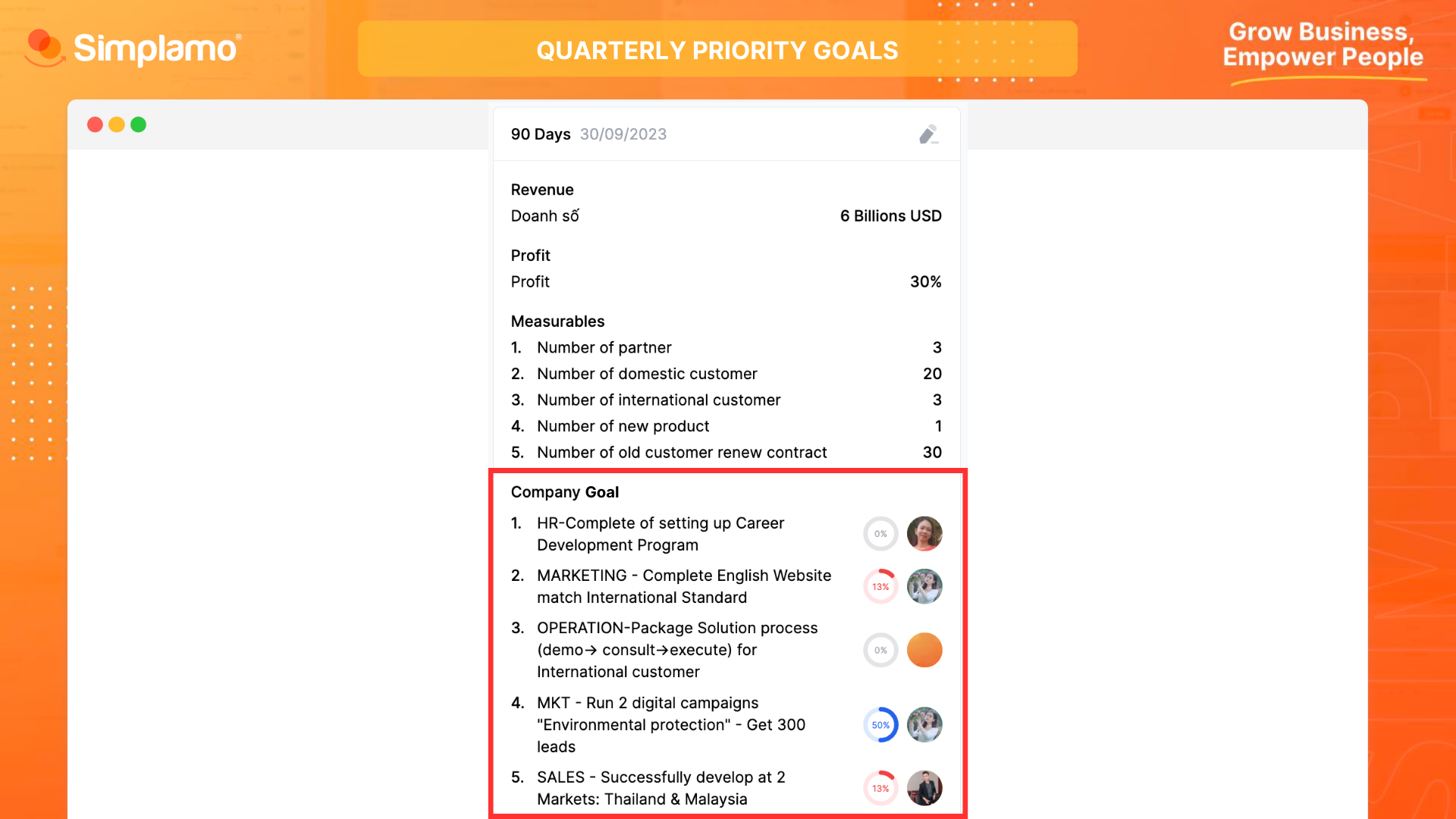
Below is an example for a Quarterly Priority Goals:
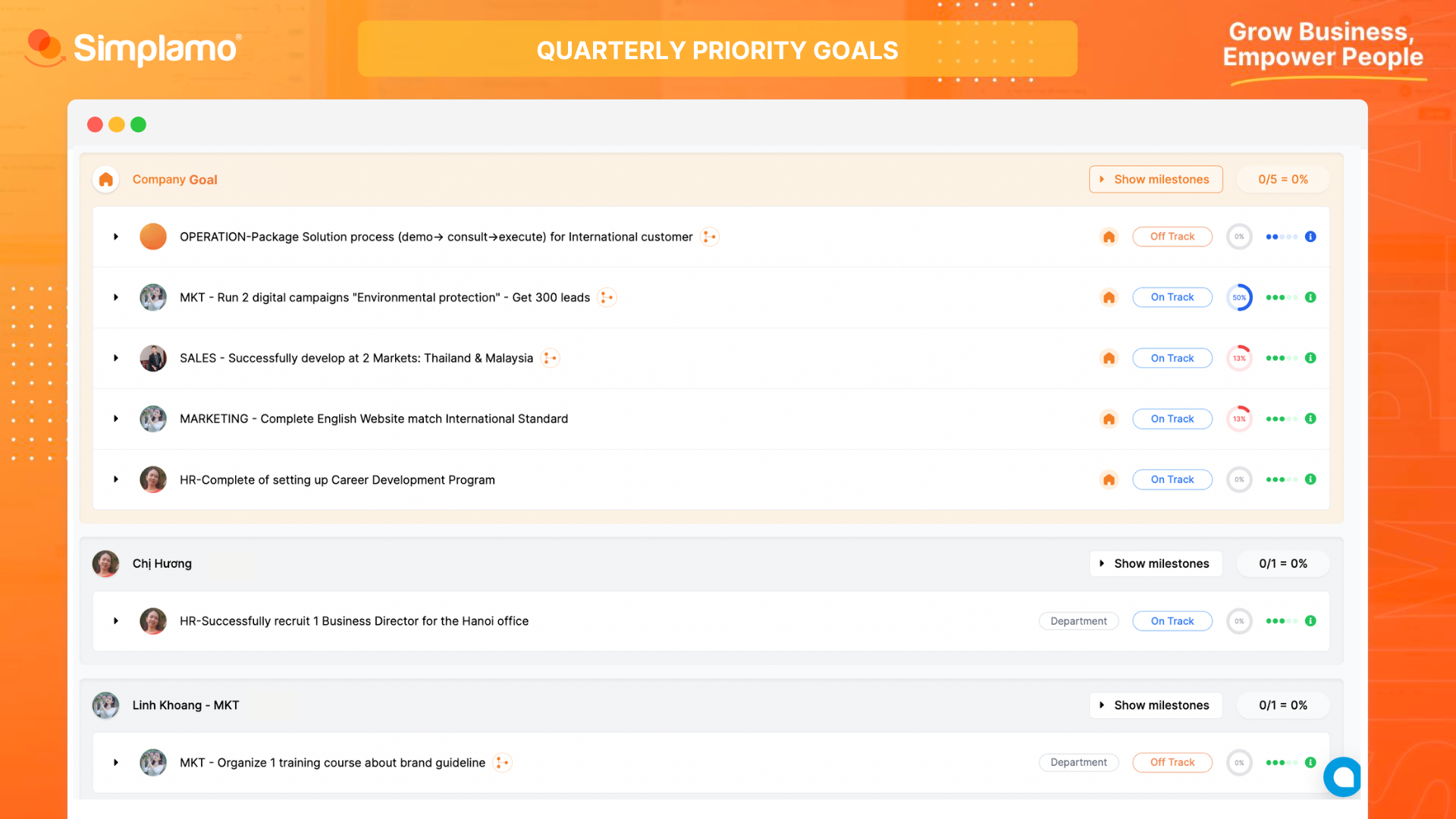
Step 5: Break Down the Goal
Finally, the owner of the Quarterly Priority Goal will independently set up Milestones - Presenting them to superiors and the team during weekly meetings.
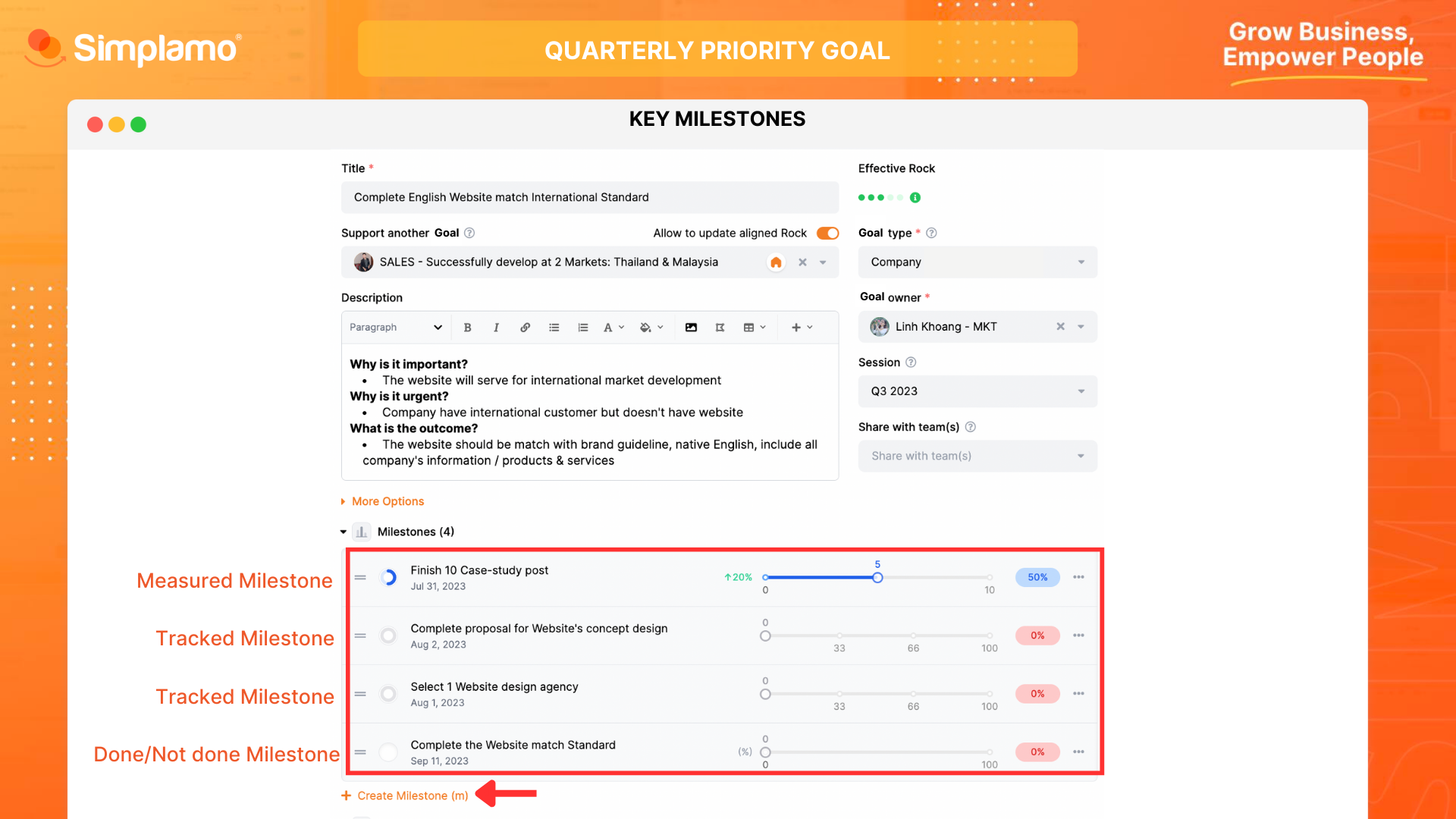
So, you have just finding out how to set up Quarterly priority Goal, wish you success.